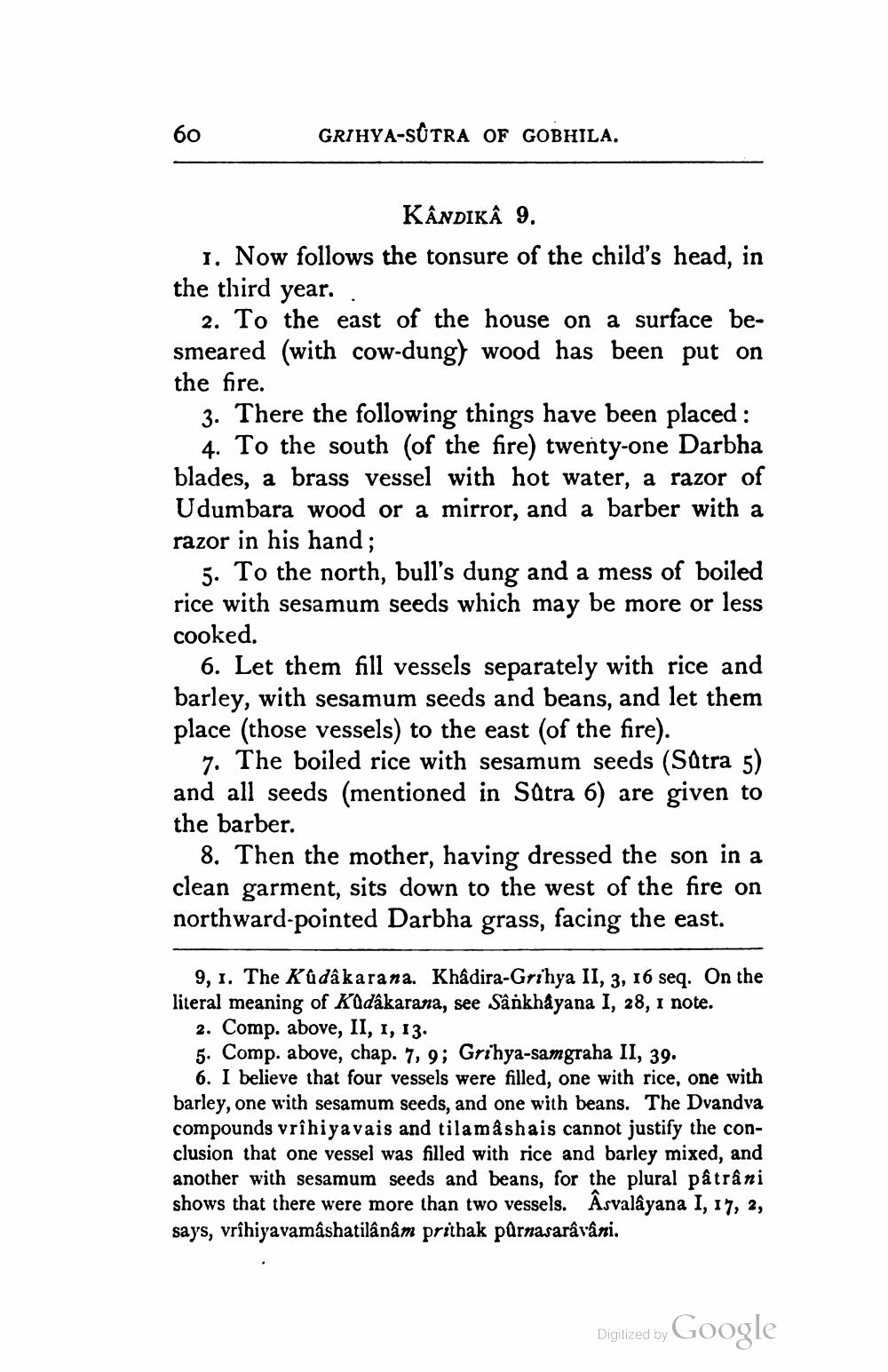________________
60
GRIHYA-SUTRA OF GOBHILA.
KANDIKA 9.
1. Now follows the tonsure of the child's head, in the third year.
2. To the east of the house on a surface besmeared (with cow-dung) wood has been put on the fire.
3. There the following things have been placed : 4. To the south (of the fire) twenty-one Darbha blades, a brass vessel with hot water, a razor of Udumbara wood or a mirror, and a barber with a razor in his hand;
5. To the north, bull's dung and a mess of boiled rice with sesamum seeds which may be more or less cooked.
6. Let them fill vessels separately with rice and barley, with sesamum seeds and beans, and let them place (those vessels) to the east (of the fire).
7. The boiled rice with sesamum seeds (Sutra 5) and all seeds (mentioned in Sûtra 6) are given to the barber.
8. Then the mother, having dressed the son in a clean garment, sits down to the west of the fire on northward-pointed Darbha grass, facing the east.
9, 1. The Kudâkarana. Khâdira-Grihya II, 3, 16 seq. On the literal meaning of Küdâkarana, see Sankhayana I, 28, I note. 2. Comp. above, II, 1, 13.
5. Comp. above, chap. 7, 9; Grihya-samgraha II, 39.
6. I believe that four vessels were filled, one with rice, one with barley, one with sesamum seeds, and one with beans. The Dvandva compounds vrîhiyavais and tilamâshais cannot justify the conclusion that one vessel was filled with rice and barley mixed, and another with sesamum seeds and beans, for the plural pâtrâni shows that there were more than two vessels. Âsvalâyana I, 17, 2, says, vrîhiyavamâshatilânâm prithak pûrnasarâvâni.
Digitized by
Google




